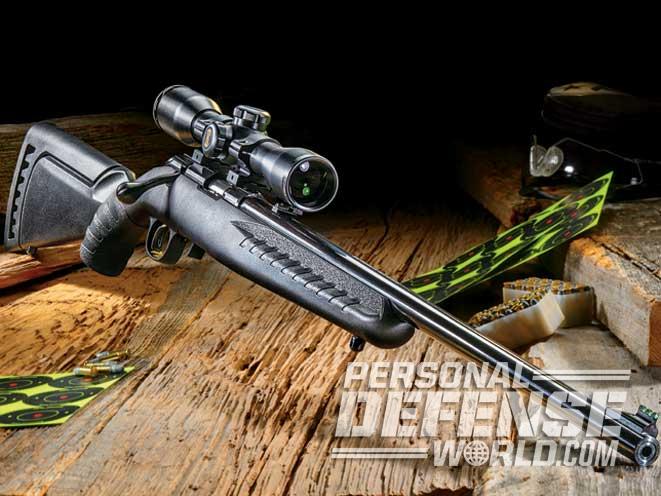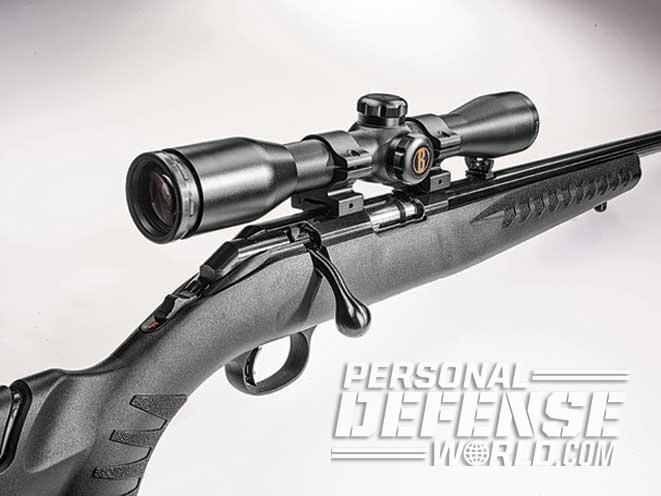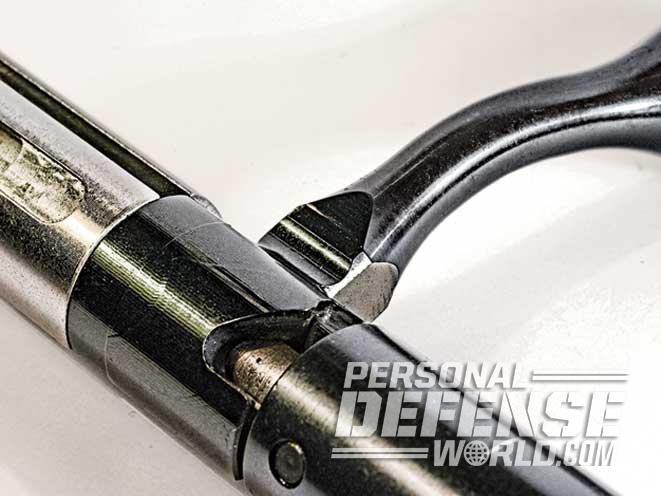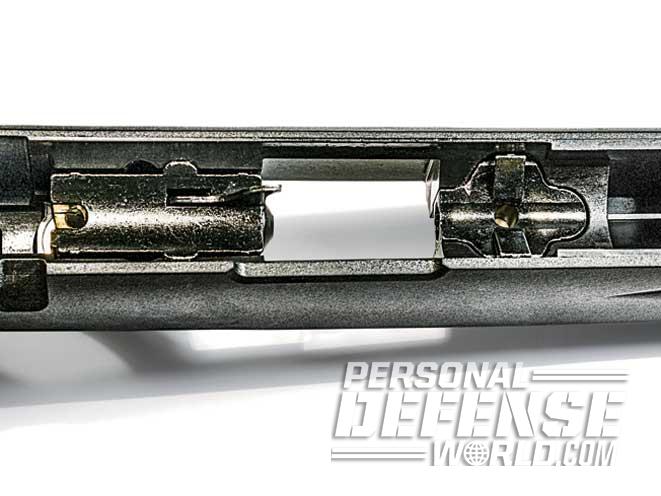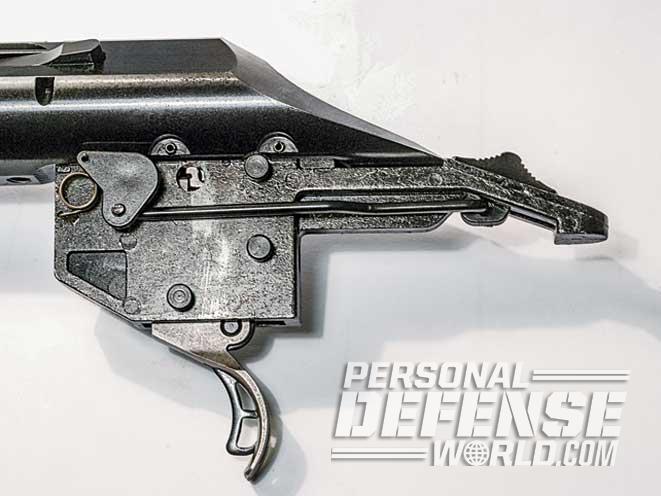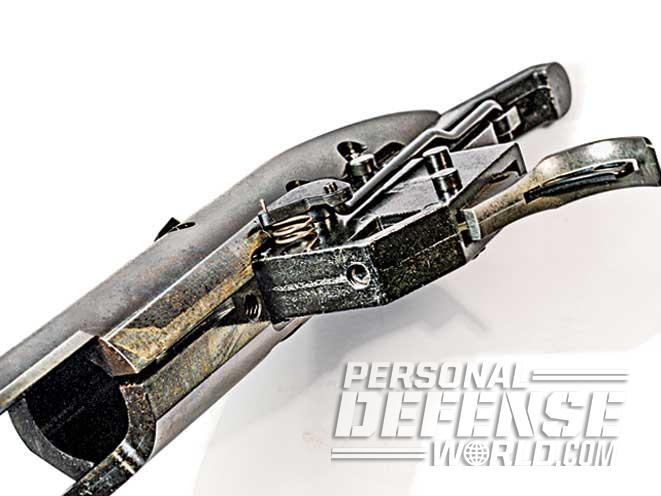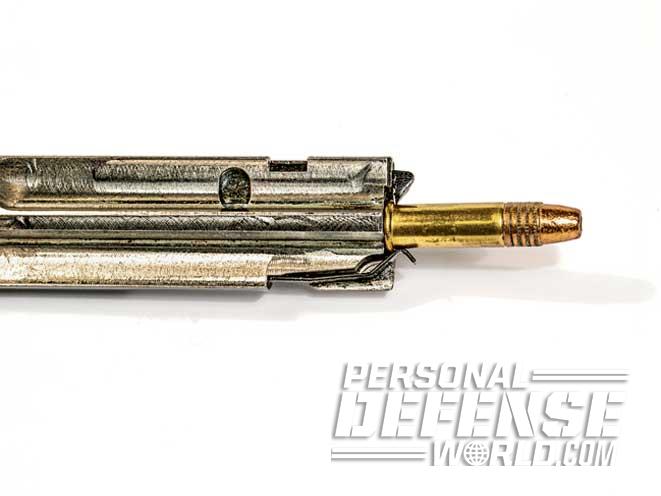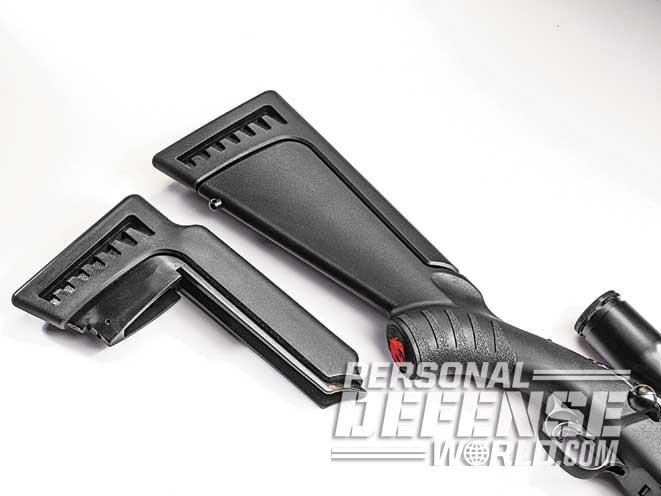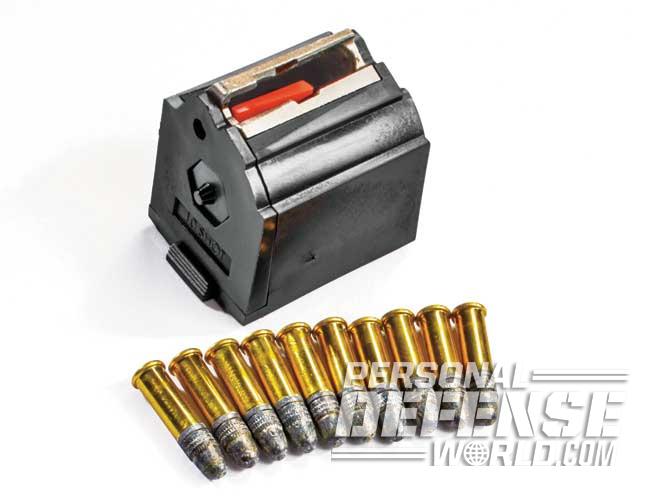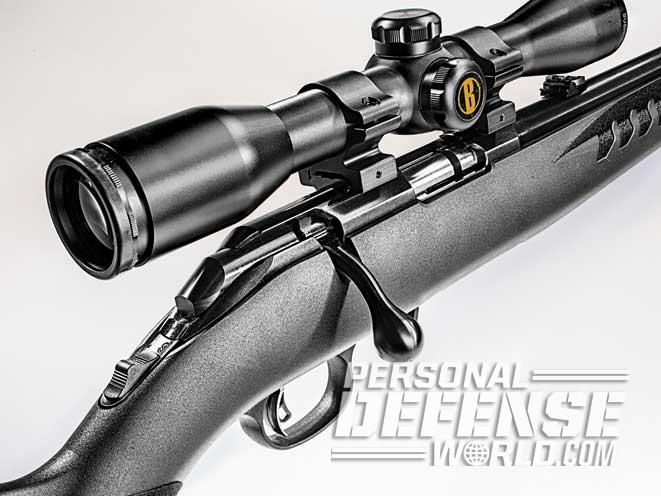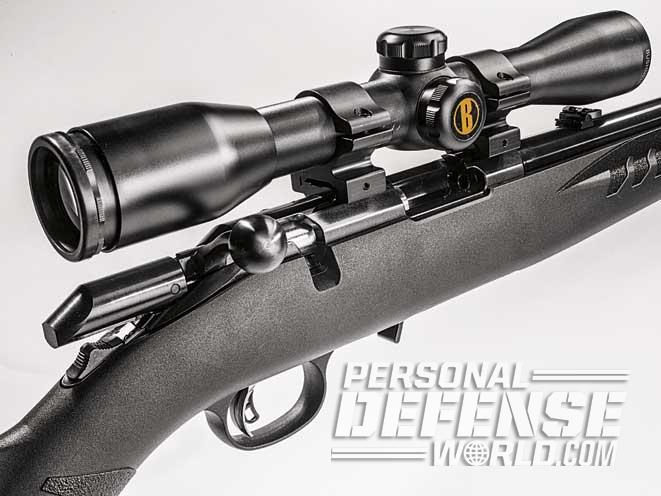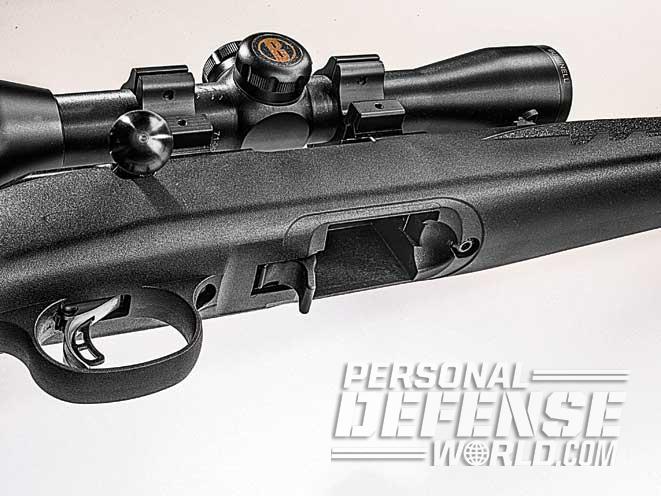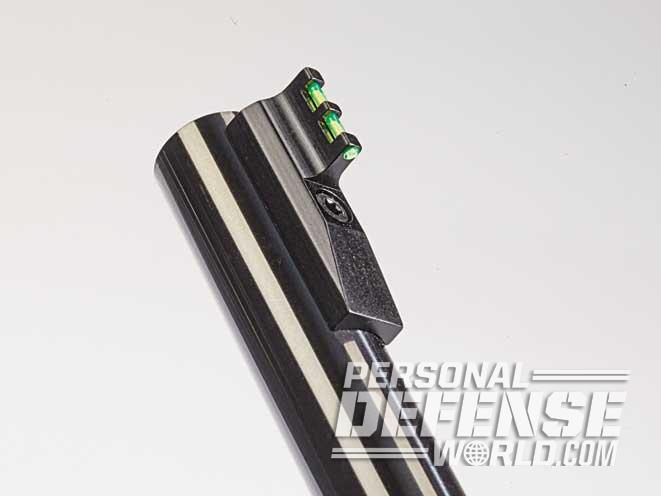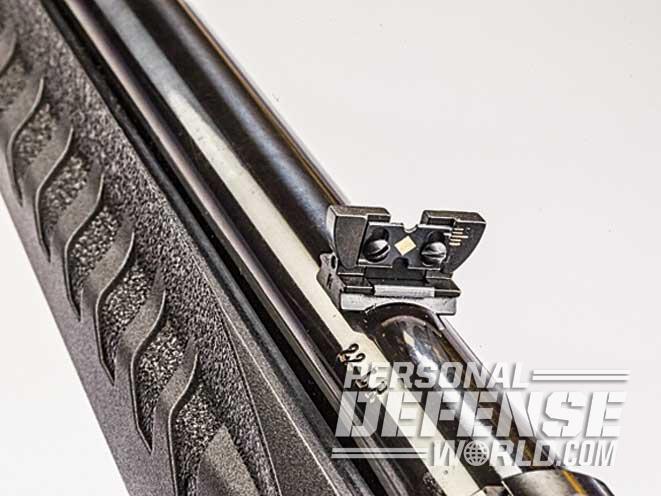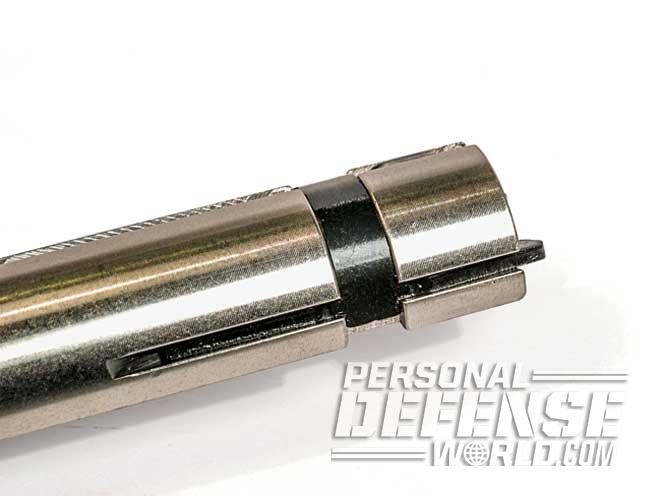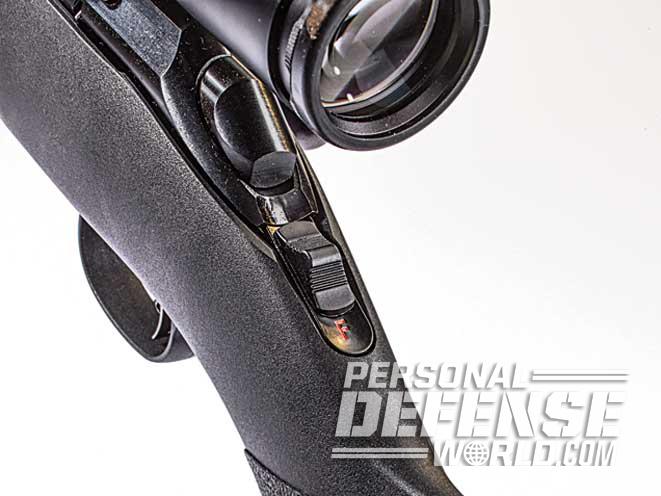Most manufacturers of firearms have dates that punctuate their history because they correspond to the introduction of certain models that became famous. Winchester introduced the famous Model 94 lever-action rifle in 1894. In 1873, Colt introduced the Single Action Army revolver. For Sturm, Ruger & Company, 1964 marked the introduction of the Model 10/22 autoloader in .22 LR, which has achieved enormous popularity.
The year 1983, in my opinion, was equally important for Ruger—that was the year the company filled a gap in American firearms with the introduction of the elegant Model 77/22 rimfire bolt-action sporter. Still in production, the line is currently available in .22 LR, .17 HMR and .22 WMR calibers, but with the MSRP of $939, it is a tad expensive for a rimfire. Regardless, the graceful Model 77/22 was Ruger’s only bolt-action rimfire—until the Ruger American Rimfire.

With many current centerfire sporters costing around $1,000, several companies have introduced lower-priced models as budget-minded alternatives to their premium lines. Ruger’s recent entry to that segment of the market is the American line of rifles, which is available in several popular centerfire calibers. The American rifles feature adjustable triggers, and their composite stocks house steel bedding blocks. Having achieved a great success with the value-priced centerfire American, Ruger recently designed a no-frills rimfire version appropriately named the Ruger American Rimfire.
Advertisement — Continue Reading Below
There is no shortage of comparatively inexpensive bolt-action rimfires, but Ruger has not previously been represented in this segment of the market. With suggested retail prices between $329 and $369, the Ruger American Rimfire series is affordable, but what do you really get for your money? I picked up two versions and hit the range to find out.
Affordable Bolts

When I first handled the Ruger American Rimfires, I noted the beautifully polished and blued metal of the barrels and receivers. In my opinion, this aspect of the American is superior to any other rimfire rifle in a comparable price range. A black composite stock is used on the American, and the triggerguard is an integral part of the stock. Surfaces on the pistol grip and forearm are deeply grooved and provide a secure hold. Studs are provided for attaching sling swivels.
Advertisement — Continue Reading Below
RELATED STORY: 6 Ruger Pocket Pistols & Revolvers For Self Defense
Although it does not approach the Model 77 in style, the American Rimfire nevertheless has some novel features. It is available in .22 LR, .17 HMR and .22 WMR, as full-sized and compact models. The compact versions feature 18-inch barrels, whereas the standard models have 22-inch barrels. I tested two standard models in .22 LR and .22 WMR. The hammer-forged barrels have recessed crowns, but models with threaded barrels are also available.

The length of pull and comb height can be altered by interchanging a removable section that is held in place by the rear swivel stud. Removing the stud allows the L-shaped module comprising the butt and comb to be removed so another with different dimensions can be installed. Two L-shaped modules are provided with the rifle. The weights of the various models range from about 5.5 to 6 pounds.
Advertisement — Continue Reading Below
The stock features aluminum bedding inserts, but the barrel is free-floating. The bedding blocks have transverse ridges that fit into grooves on the bottom of the action. As is the case with many rimfire rifles, the root of the bolt handle serves as a locking lug. A shiny surface on the bolt handle serves as the contact point with the receiver. I was not able to get any information from Ruger as to its nature, but I suspect it is specially ground and designed to control headspace accurately.
As a result of being pinned to the receiver, the barrel is not user replaceable, as is the case with Model 77/22 rimfires. The barrel and action are held to the stock by two bolts that can be turned by means of a 1/8-inch Allen wrench.

One feature of the American that is different from most rimfires is the adjustable Marksman trigger, which can be adjusted by the user for a pull weight between 3 and 5 pounds. The bolt opens with a 60-degree rotation. The sliding, tang-mounted safety is located just behind the rear end of the bolt. When the safety is off, a large red “F” is visible.
Advertisement — Continue Reading Below
RELATED STORY: Ruger Expands Its American Rifle Series in 2015
The rotary magazines utilized in the 10/22 and Model 77/22 rimfires have long been recognized for their reliable feeding. Consequently, Ruger designed the American Rimfire series to use the same magazines. The magazine release is a lever that protrudes from the bottom of the action, located a couple of inches in front of the triggerguard.
The American Rimfire has a grooved receiver for attaching scope mounts, but the receiver is also drilled and tapped for attaching two Weaver No. 12 bases. Not all types of shooting require a scope, however, and often I choose not to use one. As rifles should, the Ruger American Rimfire comes complete with metallic sights. The rear sight is an adjustable folding model in which the blade can be moved. One edge of the blade has a U-shaped notch, whereas on the opposite edge the notch is square in profile. The front sight consists of a post with a green fiber-optic insert. If a scope is mounted low, sunlight on the green insert can show up as a green blob in the scope, which happened during testing. I much prefer sights without the gleaming fiber-optic bars or dots, so a drop of black paint might be in order, but this, of course, is a personal preference.
Advertisement — Continue Reading Below
American Accuracy

To test the Ruger American Rimfires’ accuracy, I mounted a Leupold VX-1 Rimfire 2-7x28mm scope on the .22 LR and a Burris 3-9x40mm scope on the .22 WMR. I used several types of ammunition, including target and high-velocity hunting loads. In all cases, I obtained three 5-shot groups at a range of 50 yards with both rifles.
One does not judge the performance of a basketball player who scores 30 points by one shot that results in an “air ball.” Likewise, I do not assess accuracy by the most errant shot that may greatly enlarge the size of a group. As a result, my practice is to take the four closest shots as being more indicative of the accuracy potential of a particular rifle/load combination.
Advertisement — Continue Reading Below
Wide variation in accuracy with different types of ammunition is a general trait among rimfires, and the Ruger American Rimfire is no exception. The data shows that the .22 LR Ruger American is capable of good accuracy if the right ammunition is used. In this case, the right ammunition is one of the target loads or the Winchester Power-Point.

I tested the .22 WMR American with a few of the many loads available. With CCI Maxi Mag ammo, the average group size was 0.76 inches, while the 50-grain Federal hollow-point rounds had an average of 1.13 inches, which is quite good for its weight.
RELATED STORY: 6 Manufacturers Selling Lever-Action Rifles For Home Defense Or Hunting
Advertisement — Continue Reading Below
The best performance came with the Hornady Critical Defense ammo, which gave an average of 0.72 inches. Although advertised to give the 45-grain bullet a velocity of 1,700 fps from a rifle barrel, I chronographed this load at a significantly higher 1,808 fps. Although intended for defensive use in handguns, it is also an excellent varmint load. The American Rimfire in .22 WMR, topped with a moderate- power scope, would be a good entry-level rifle for taking out varmints.
The American Rimfire series represents Ruger’s expansion into a popular segment of the firearms market. As a rifle giving dependability and good performance at a retail price of around $339, the American Rimfire (and its variants) is a great choice. I got along quite well with both the .22 LR and .22 WMR Americans. Anyone in the market for a bolt-action rimfire should definitely check them out, and their centerfire brethren are just as dependable and accurate on the range or in the field.
For more information, visit http://www.ruger.com.
Advertisement — Continue Reading Below
